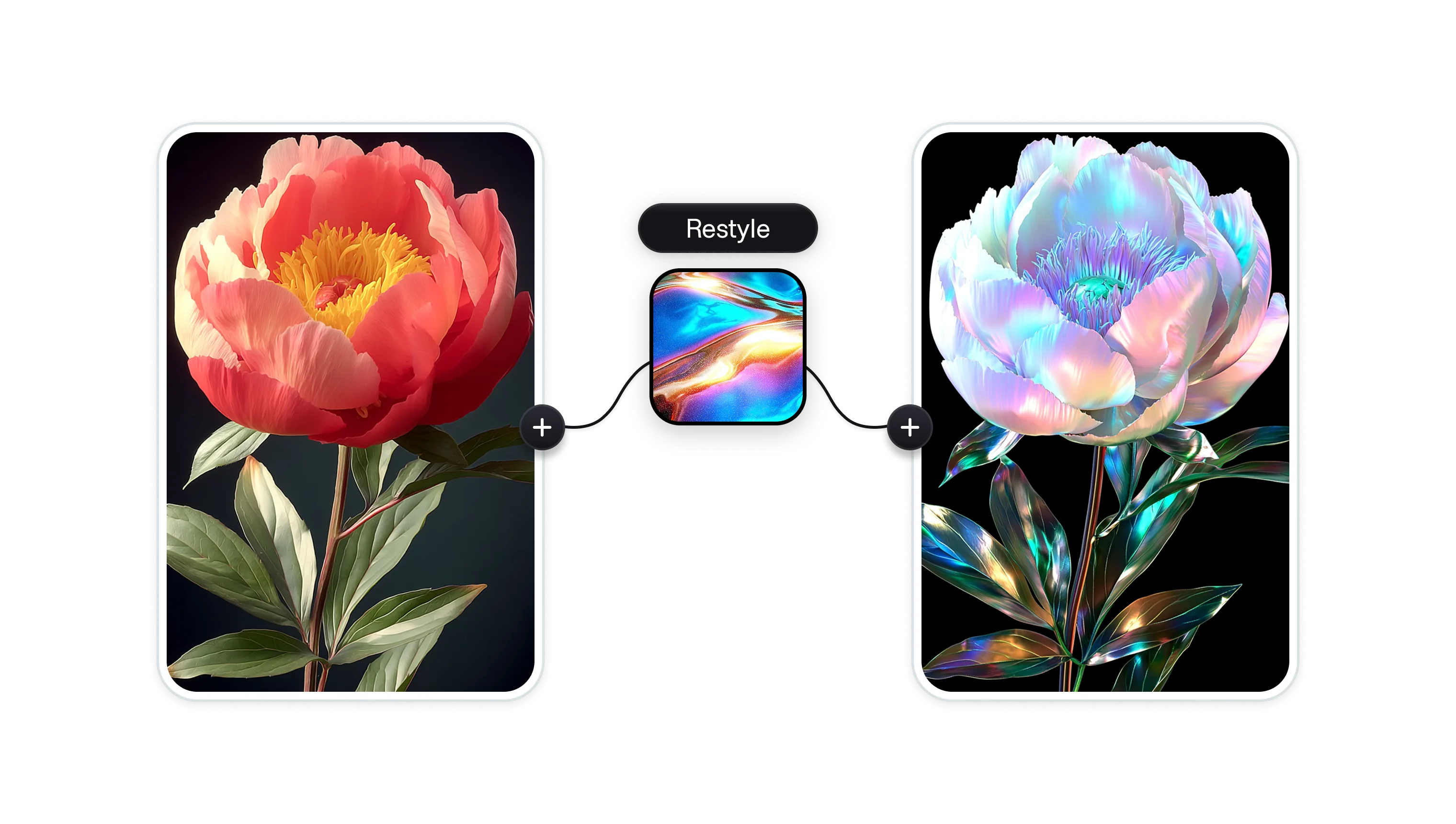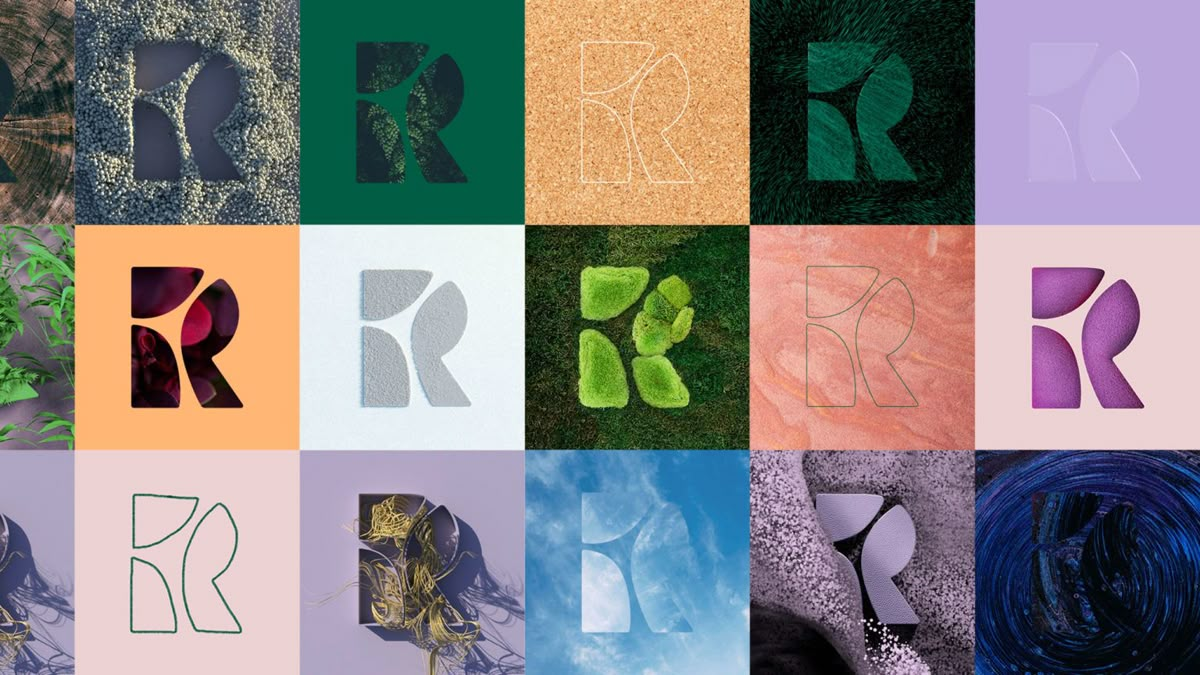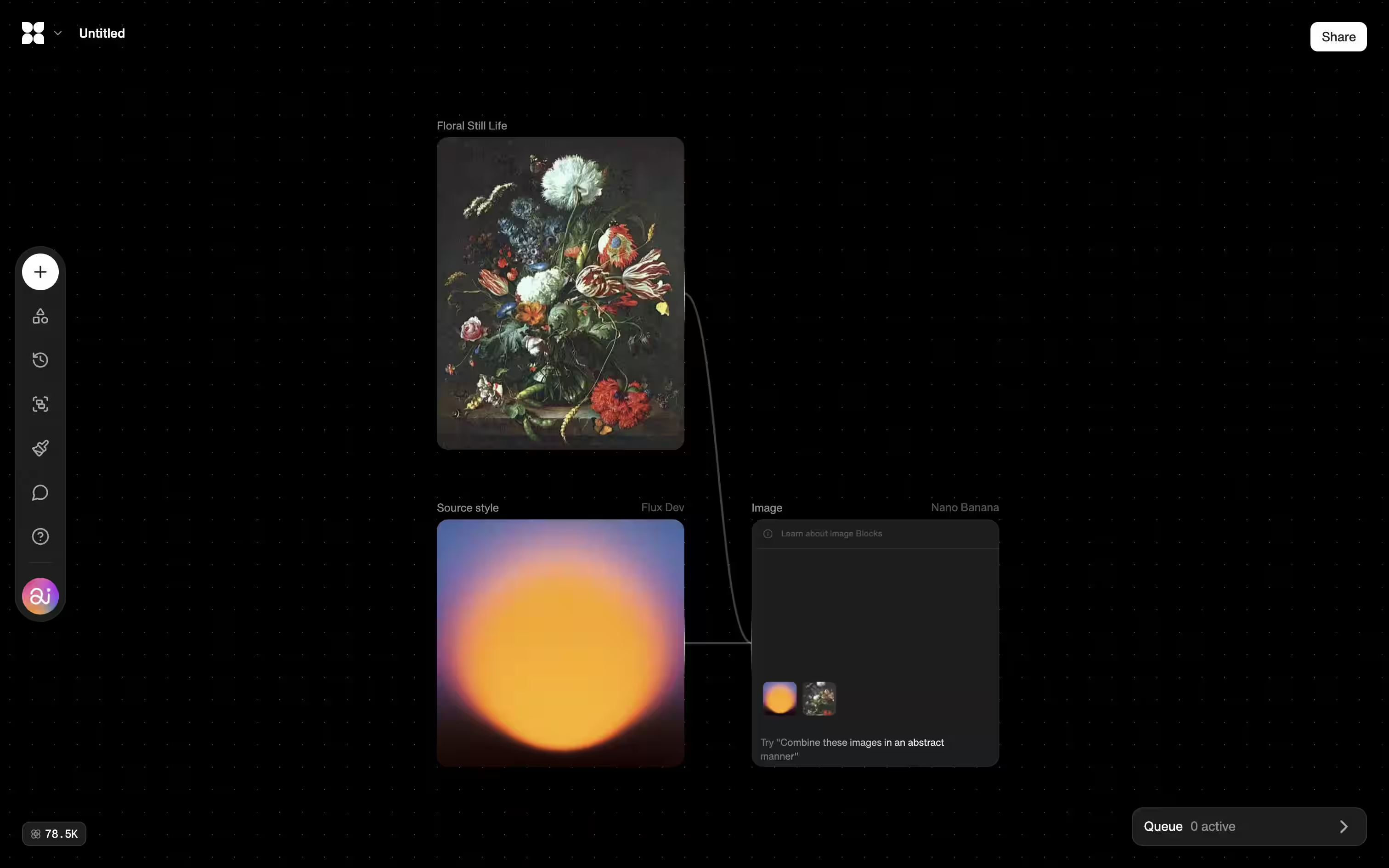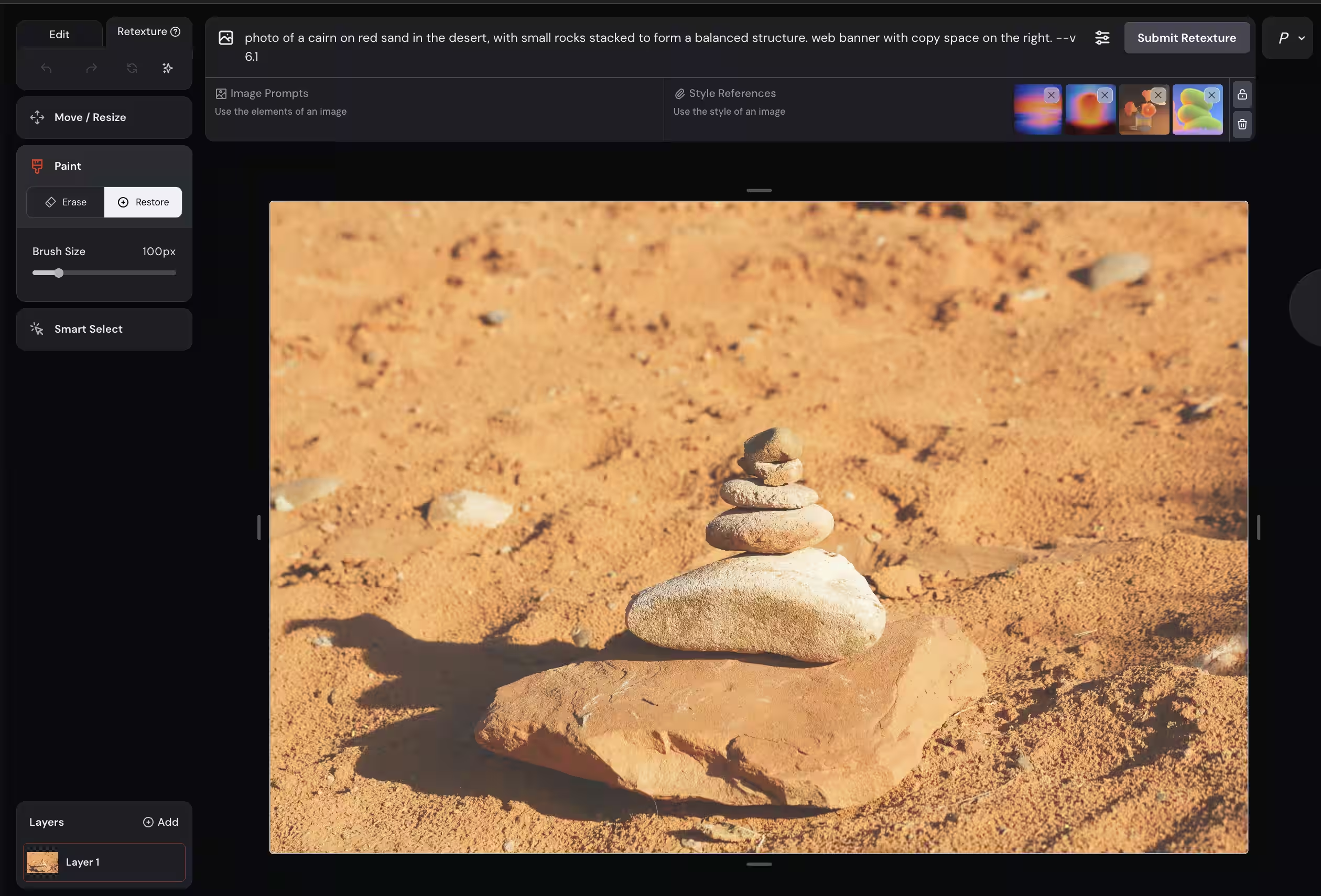

Just as people shift their tone depending on context, AI can alter the surface style of its outputs without changing their underlying content. Restyling makes a piece of writing, an image, or a song look or sound different while leaving its structure and meaning intact.
Restyling is convergent. While the surface level of the content changes, the substance stays the same. A blog post can be rewritten in a playful brand voice, a photo can adopt a watercolor effect, or a song can be filtered into a jazz arrangement. The function is not to create something new but to regenerate the same thing in a different skin.
The actual changes in style can be explicit or inferred. Users may pick a style directly via codes, palettes, tokens, or guides, or they may let the system infer intent through inline prompts like “Make it more formal” or by attaching a reference sample. The pattern works across modalities:

Restyling sits alongside two adjacent patterns: Restructure alters structure while staying in the same medium, such as condensing or expanding text. Transform changes modality while keeping structure intact, such as turning a written outline into a slideshow. Together, they form a spectrum of control over form and presentation.

